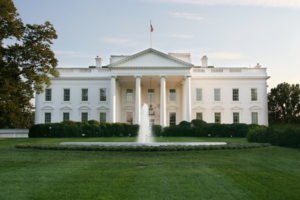The latest executive order on drones may require federal agencies to replace – or at least review – their current fleet of Chinese- or other foreign-manufactured drones.
BREAKING – Show Me the Money! Adversary Country Drones To Be Replaced?
By Contributing Editor Dawn M.K. Zoldi*
Up until now, most of the U.S. government’s extra special attention in the politico economic sphere, at least in relation to foreign drones, was laser-focused on China. That changed with the January 18, 2021 Executive Order on Protecting The United States From Certain Unmanned Aircraft Systems (UAS), which expanded the U.S.-China drone tech war to fronts in North Korea, Iran and Russia.
In addition to these enumerated countries, the order provides the Secretary of Commerce with the authority to also designate “any other foreign nation, foreign area, or foreign non-government entity engaging in long-term patterns or serious instances of conduct significantly adverse to the national or economic security of the United States.”
Its purpose is to, “prevent the use of taxpayer dollars to procure UAS that present unacceptable risks and are manufactured by, or contain software or critical electronic components from, foreign adversaries, and to encourage the use of domestically produced UAS.”
However, the latest executive order on drones does not constitute an actual cease-and-desist. It falls more in the “go review” than “can’t do” category. It requires the feds, within the next 60 days, to review their “authority to cease” procuring, funding or contracting the “covered UAS” of such foreign adversaries. The term “covered UAS” means any UAS that:
(i) is manufactured, in whole or in part, by an entity domiciled in an adversary country;
(ii) uses critical electronic components installed in flight controllers, ground control system processors, radios, digital transmission devices, cameras, or gimbals manufactured, in whole or in part, in an adversary country;
(iii) uses operating software (including cell phone or tablet applications, but not cell phone or tablet operating systems) developed, in whole or in part, by an entity domiciled in an adversary country;
(iv) uses network connectivity or data storage located outside the United States, or administered by any entity domiciled in an adversary country; or
(v) contains hardware and software components used for transmitting photographs, videos, location information, flight paths, or any other data collected by the UAS manufactured by an entity domiciled in an adversary country.
The order also requires the feds to inventory covered UAS that are already agency owned or operated and to report their already-in-place security protocols. Many federal agencies have already done this, at least with respect to China. The Army moved out first when they banned Chinese drones in 2017. The Air Force and Navy did so the following year. The Department of Defense issued a policy ban in 2018, which Congress later codified in Section 848 of the Fiscal Year 2020 National Defense Authorization Act. Multiple other federal agencies instituted similar policy bans, including the Department of the Interior and the Department of Justice. Others, such as the Department of Homeland Security’s (DHS) Federal Emergency Management Agency, locked up grant funding for such drones. The DHS office responsible for protecting critical infrastructure, the Cybersecurity and Infrastructure Security Agency (CISA), has been sounding the Chinese drone cyber security threat alarm for years. Now add North Korea, Iran and Russia to that list.
After the feds generate their inventory reports, no more than 120 days later, the Director of National Intelligence, with the Secretary of Defense, the Attorney General, the Secretary of Homeland Security, the Director of the Office of Science and Technology Policy, and the heads of other appropriate agencies must review them and submit their own security assessment to the President. That report should also outline, “potential steps that could be taken to mitigate these risks, including, if warranted, discontinuing all Federal use of covered UAS and the expeditious removal of UAS from Federal service.”
The order also gives the Federal Aviation Administration (FAA) it’s own “go-do.” Within 270 days, the Administrator is supposed to lay out restrictions on the use of UAS on or over critical infrastructure or other sensitive sites per Section 2209 of the FAA Extension, Safety, and Security Act of 2016 (FESSA, Public Law 114-190). Except they already have a process for this. It’s called a Temporary Flight Restriction (TFR), issued pursuant to Special Security Instruction (SSI) authority. Technically, TFRs can only be requested by national defense, national security, and federal intelligence departments and agencies. However, other government or private sector entities can, in the interest of national security, request those agencies to sponsor a TFR over critical infrastructure, oil refineries and chemical facilities, amusement parks or other locations that warrant such restrictions. FAA FDC NOTAM 7/7872, which the FAA modifies from time to time, defines restrictions and covered locations. An updated table can be found here and on the B4UFly App. Disney World has had a TFR in place that predates even the FESSA. If the idea is to give a direct line from private industry to the FAA on TFRs, as opposed to through a security agency sponsor, the agency will definitely need additional manpower. And money.
Speaking of money, funding is actually mentioned in the order. It encourages federal agency heads to budget for replacement drones (good for U.S. industry) and directs the Office of Management and Budget (OMB) to find the funding to do so (even better for U.S. industry).
Perhaps because this latest executive order on drones was one of many in the final hours of a lameduck administration, it is unnumbered and cites no legal authority as its basis. Nevertheless, for the most part, it makes an abundant amount of sense from a national security perspective. If this order has staying power – and it could – the clear winners here will be federal security agencies as well as U.S. and non-adversary country drone makers. But only if OMB shows us the money.
*The views and opinions in this article are those of the author and do not reflect those of the DOD, do not constitute endorsement of any organization mentioned herein and are not intended to influence the action of federal agencies or their employees.
 Dawn M.K. Zoldi (Colonel, USAF, Retired) is a licensed attorney and a 25-year Air Force veteran. She is an internationally recognized expert on unmanned aircraft system law and policy, the Law-Tech Connect™ columnist for Inside Unmanned Systems magazine, a recipient of the Woman to Watch in UAS (Leadership) Award 2019, and the CEO of P3 Tech Consulting LLC. For more information, visit her website at: https://www.p3techconsulting.com.
Dawn M.K. Zoldi (Colonel, USAF, Retired) is a licensed attorney and a 25-year Air Force veteran. She is an internationally recognized expert on unmanned aircraft system law and policy, the Law-Tech Connect™ columnist for Inside Unmanned Systems magazine, a recipient of the Woman to Watch in UAS (Leadership) Award 2019, and the CEO of P3 Tech Consulting LLC. For more information, visit her website at: https://www.p3techconsulting.com.
Miriam McNabb is the Editor-in-Chief of DRONELIFE and CEO of JobForDrones, a professional drone services marketplace, and a fascinated observer of the emerging drone industry and the regulatory environment for drones. Miriam has penned over 3,000 articles focused on the commercial drone space and is an international speaker and recognized figure in the industry. Miriam has a degree from the University of Chicago and over 20 years of experience in high tech sales and marketing for new technologies.
For drone industry consulting or writing, Email Miriam.
TWITTER:@spaldingbarker
Subscribe to DroneLife here.
https://dronelife.com/2021/01/21/the-latest-executive-order-on-drones-the-ban-on-chinese-and-covered-country-uas-expanded/
 Unmanned Aerial Vehicle The latest drone news
Unmanned Aerial Vehicle The latest drone news





